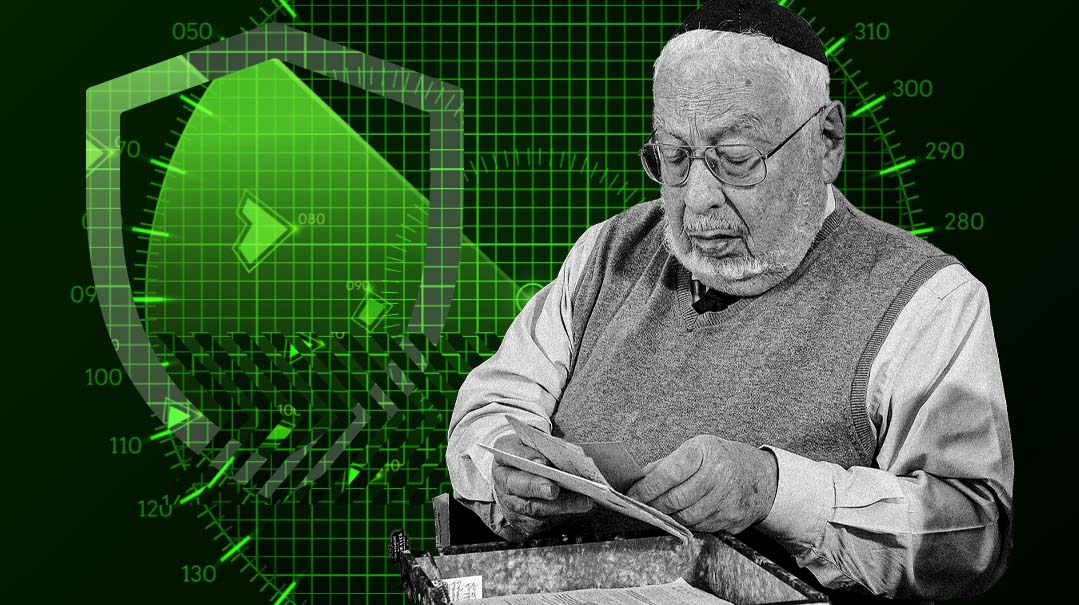Finding His Spark
| January 18, 2022Gateshead’s Doddy Gurwicz fuses Torah royalty with cutting-edge science

Photos: Ruskin Photography
It was 1976, and although nearly three years had passed since the Yom Kippur War, the sense of national bruising and shame was still very real for Israelis, who had watched in horror as their tanks were pummelled and decimated by Egypt’s Russian-supplied anti-tank missiles. While the IDF rapidly turned the tide once reinforcements were on the way, disabling Egyptian air defenses and surrounding the Egyptian Third Army in the south, and repulsing Syrian advances in the Golan Heights in the north, Israel paid a heavy price.
Now, at a military base in Haifa in northern Israel, a ceremony of pride and healing was underway. It was the unveiling of a landmark piece of military hardware that was vaunted to become a cornerstone of Israel’s defence capability, representing a momentous step in Israel’s efforts to secure its borders: the launch of the all-new Merkava tank.
Milling around were the best and the brightest of the Israeli defense establishment, including tank warfare expert and Merkava project initiator General Yisrael Tal, mingling with politicians and a smattering of journalists. But what was Mr. Yitzchok Dovid (Doddy) Gurwicz — son of venerated Gateshead Rosh Yeshivah Rav Leib Gurwicz and grandson of famed mashgiach Rav Elya Lopian — doing there?
It turns out that this scion of Torah royalty and talmid chacham in his own right had spent the previous two decades straddling both the halls of Torah and of scientific research and development. He’d traveled to the Israeli event from his native Torah town of Gateshead, because he’d actually played a significant role in the development of this shiny new piece of military hardware that would be a game changer for the IDF.
Forty-five years later, Reb Doddy still lives in Gateshead, and though it’s remained England’s flagship Torah community, the world has changed, and Gateshead along with it. In a town known primarily for its yeshivos, kollelim, and seminaries, there’s also a new demographic. Whereas historically most residents were attracted here for learning or teaching, the last two decades has seen a steady increase in people putting down roots to pursue business and enterprise, settling in alongside the kollel yungeleit and klei kodesh.
These days Doddy Gurwicz spends his mornings in a kollel, where he’s no longer the only town local to juggle intensive Torah study with a profession; and he devotes much of what’s left of his day to keeping his knowledge of the industry current while also contributing to developing cutting-edge solutions for making sophisticated digital appliances Shabbos-friendly.
Yet even back then, this son and brother of Gateshead roshei yeshivah never saw his engineering profession as more than a job and a way to bring parnassah, always making sure to keep a complete separation between his work and personal life.
Even in Haifa of 1976, when he was feted by the IDF’s top brass and honored by government officials eager to shake his hand, Doddy Gurwicz gravitated instead toward a fellow he spotted who was wearing a yarmulke. “We got to talking,” says Reb Doddy, “and I was astounded to learn that he had been a talmid of my zeide, Rav Elya Lopian, in the yeshivah in Kfar Chasidim! I certainly wasn’t expecting to meet a talmid of my zeide there,” he says.
But that unlikely encounter gave context to the life of a man who achieved international renown in the world of electrical engineering designing sophisticated and complex control systems for big multi-national corporations, while simultaneously occupying pride of place as one of Gateshead’s foremost Torah balabatim.
Understanding how this elder statesman of the Gateshead kehillah — older brother of the current rosh yeshivah who lives just a few doors away, and proud father of children who are all marbitzei Torah — synthesized a trailblazing professional career while staying true to his values and prestigious forebears, is a lesson in perspectives and priorities.
Oops! We could not locate your form.







